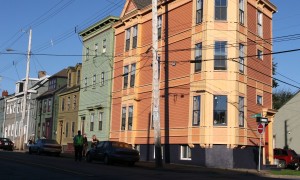TRACE architectures worked with DIALOG as the Heritage Architect and specialist to compatibly integrate the evolved requirements of Global Affairs Canada within the historic fabric of this Modern-era building complex and landscape.
This Classified Federal Heritage Building hosts an engaged occupant department with project requirements to increase occupant density, improve employee wellness, universal accessibility, and environmental sustainability.
TRACE focused on guiding the design team through the project’s heritage conservation goal, which was to ultimately conserve the modern building’s heritage value. The team was involved with areas of particular heritage interest, including the building’s exterior and landscaped grounds, the entry areas, and localized office areas.
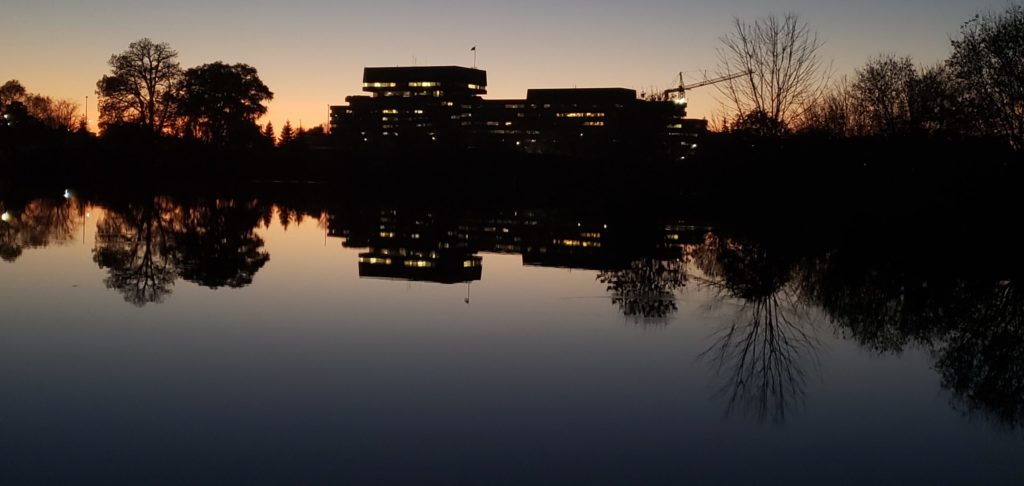
Exploring the Original Fabric
The building’s sculptural qualities are effectively communicated through the precast concrete panels, infused with Laurentian granite aggregate. The horizontal language of the building is a consistent design intention and is integrated throughout the building.
TRACE was tasked with reviewing the exterior precast panels early in the project, to understand their conditions and performance over time, and to determine the rehabilitation requirements and treatments. The building’s exterior envelope upgrades will contribute to a reduction of 85% in Greenhouse Gas emissions.
A comprehensive tests & investigations program that focused on the exterior envelope performance enabled the project team to determine the visual impact of the new window replacement and other exterior upgrades.
Statistics
Gallery
Rehabilitation Sub-Projects
Landscape
The heritage designation and scope of the larger rehabilitation project extended to the building’s immediate and surrounding context, including many elements within the landscape. TRACE was involved in the design of the new landscape features, including employee terraces, an outdoor gym, and multiple garden areas. The overall approach to the landscape strategy was to meet the client’s requirements for additional outdoor amenities, while balancing and maintaining many of the formal qualities of the plantings, and original design intent.
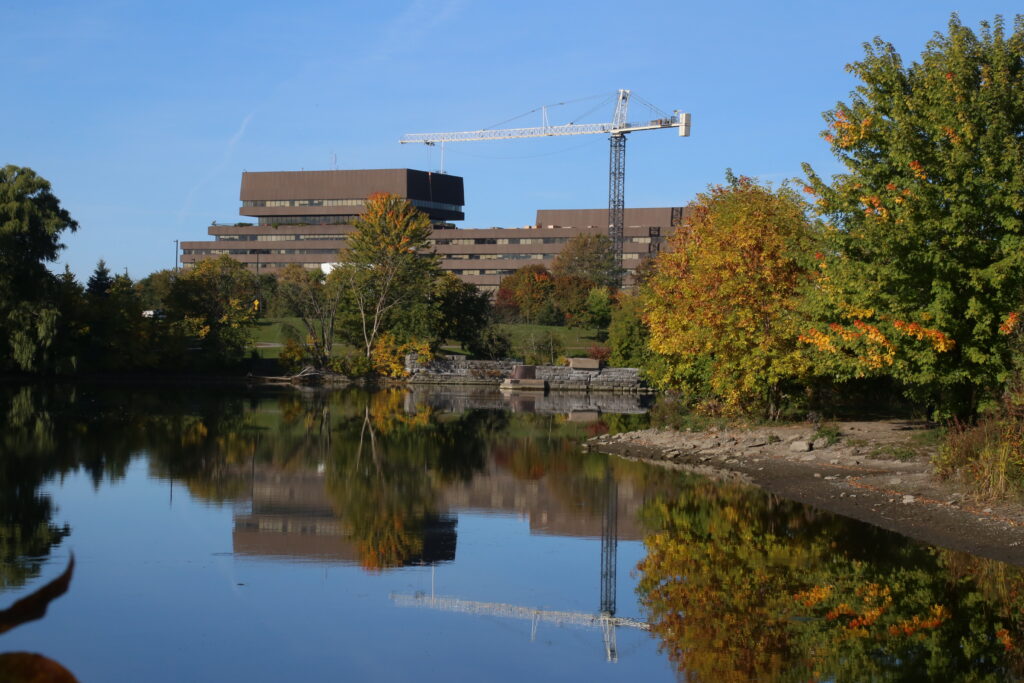
Art Conservation Support
A great part of the LBP Building’s heritage value lies in its extensive collection of art installations by various Canadian Artists. TRACE collaborated with the larger DIALOG project team, art conservators, and various trades on the rehabilitation of select exterior painted metal sculptures.
In select interior locations, TRACE explored new and updated artistic interpretations and strategic display approaches. In many cases this meant retaining the pieces in their original location. For other pieces, new public locations were explored to support and enhance heritage character.
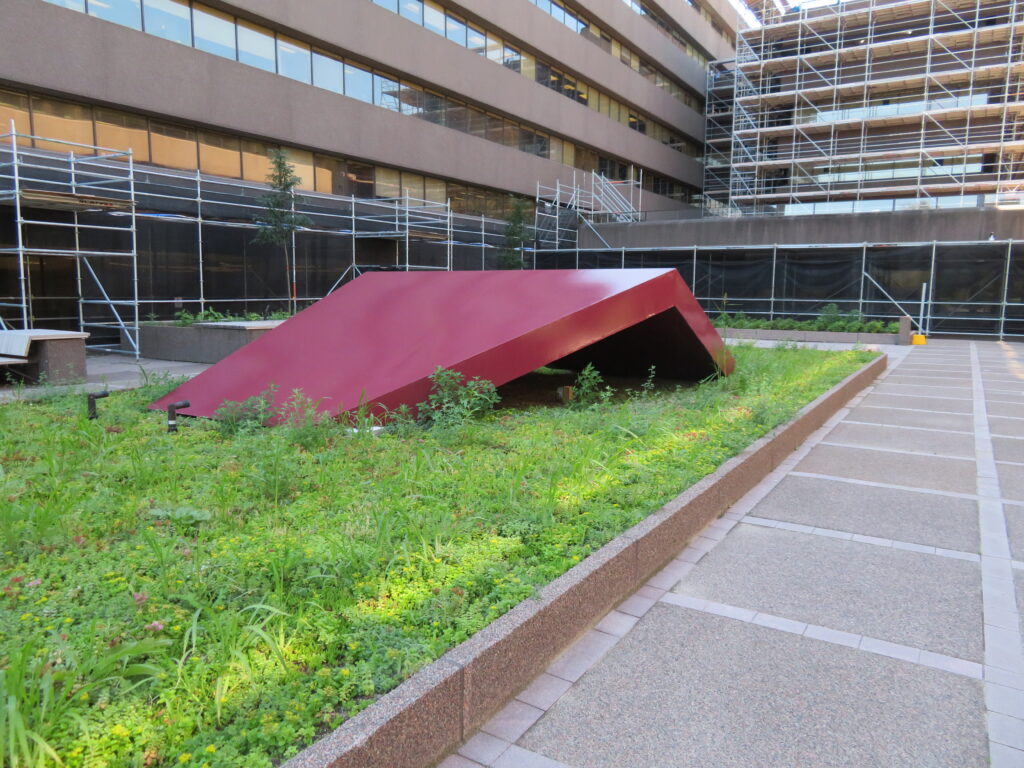
Sustainability
TRACE and the larger project team worked to bring this modern-era building to the most recent GC Workplace standards, while incorporating a Leadership in Energy and Environmental Design (LEED) Gold Certification. Part of these sustainable changes includes the extensive building envelope retrofit and window replacement, which will account for an 85% reduction in operational Greenhouse Gas Emissions (GHG) compared to 2005.
Other sustainable features include a series of vegetated roofs, solar panels, building envelope improvements, and lighting upgrades.
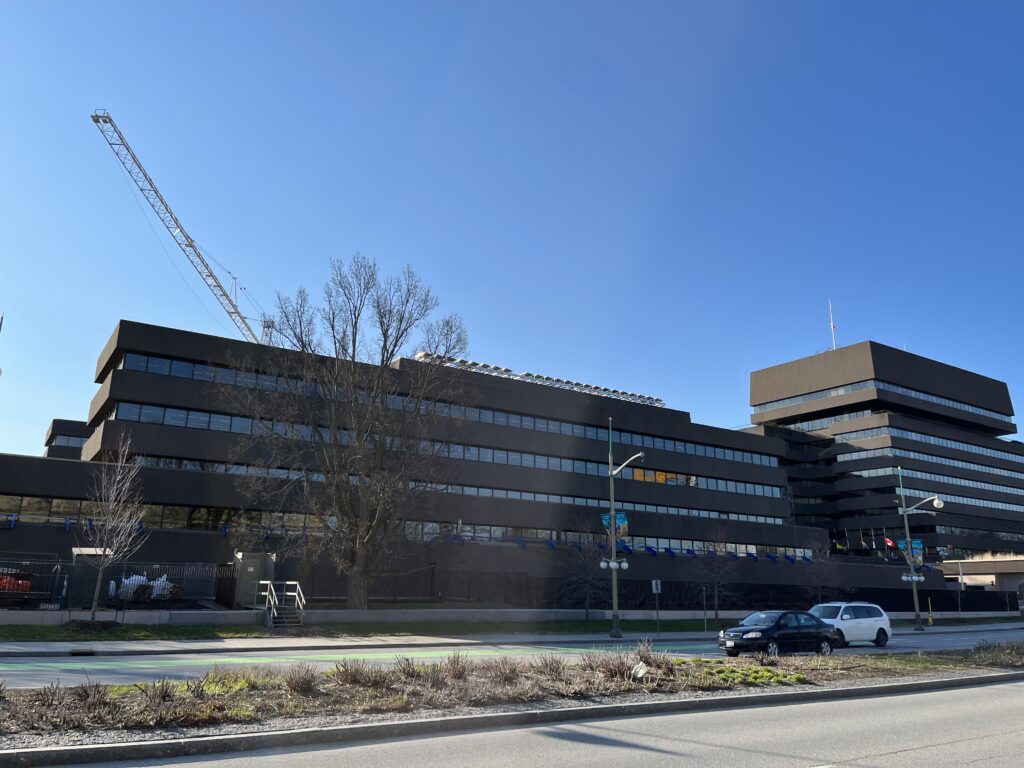
Other Projects
Sustainability Study, 2017
TRACE and a larger project team, led by WSP, worked collaboratively in advance of the larger rehabilitation project, exploring opportunities to enhance the complex’s energy performance, with carbon reduction as a primary focus. TRACE was responsible for exploring approaches that balanced heritage value with sustainability enhancements, communicating the structure’s inherently sustainable features, and maximizing retention of embodied carbon.


